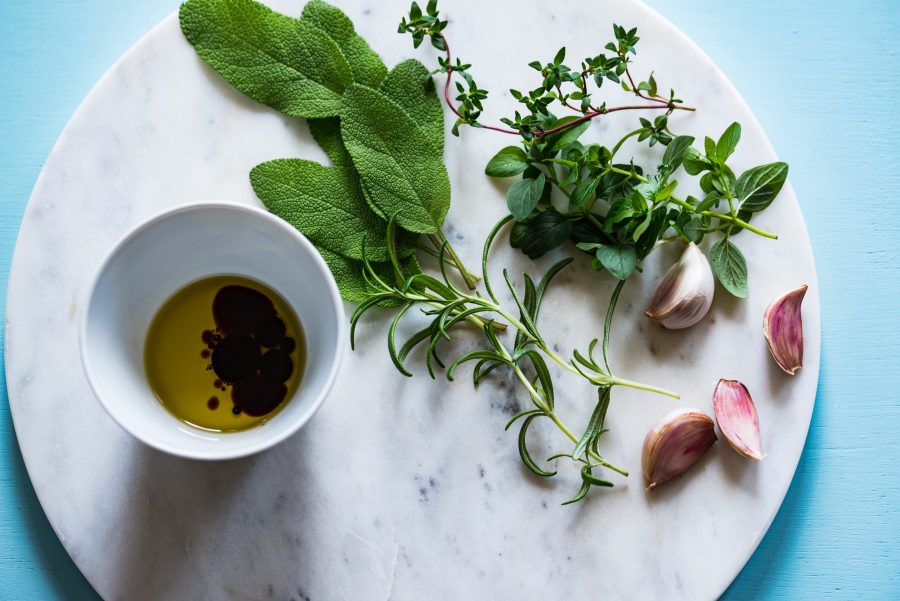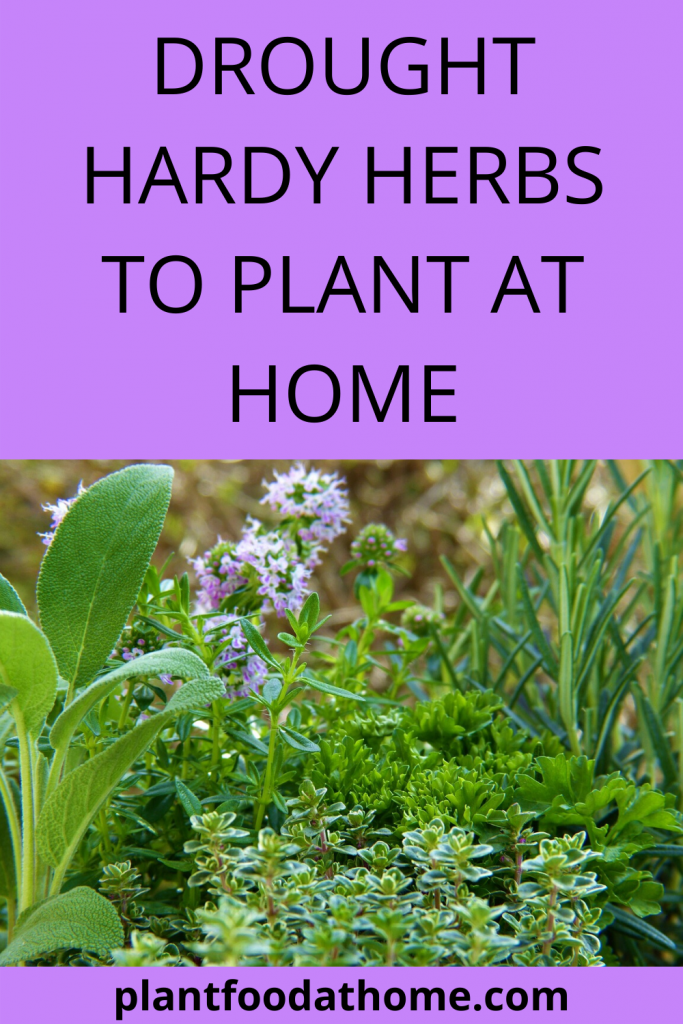If you live in a dry climate and you’re looking for edible herbs you can grow, this article is for you. We look at four drought-tolerant herbs that cope with dry weather and minimal water.
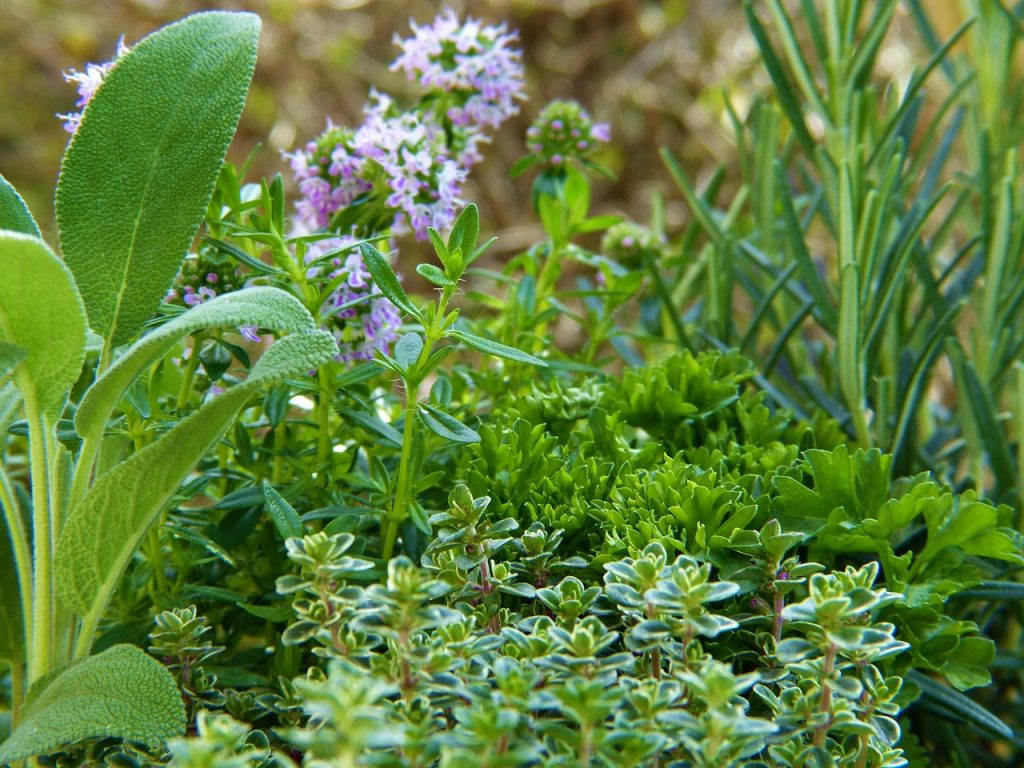
Our top four drought-hardy herbs are rosemary, sage, oregano and thyme. Once established, these herbs will thrive on a fraction of the water required by most edible plants.
Growing herbs are great for first-time gardeners and these herb plants, in particular, are very easy to grow due to their low-maintenance nature.
Many common herbs are native to the Mediterranean region. These plants thrive in dry sunny conditions in their native lands and they’ll happily grow in these conditions in your garden at home.
You can, however, help protect plants by mulching the soil around the herbs with an organic mulch. This will go a long way to retaining soil moisture, protecting the herb plant roots and feeding the soil as the mulch breaks down.
While new plants are getting established in the garden, plant growth can be supported with an organic liquid fertilizer such as fish fertilizer or seaweed fertilizer. After this time, fertilization isn’t necessary. In fact, these herbs benefit from some neglect which results in a more flavorsome herb.
This selection of herbs are perennials, meaning they last several years, in the right conditions. So you can plant them today and enjoy them for years with minimal maintenance. So let’s find out more about each herb and how you can grow them.
Table of Contents
1. Rosemary
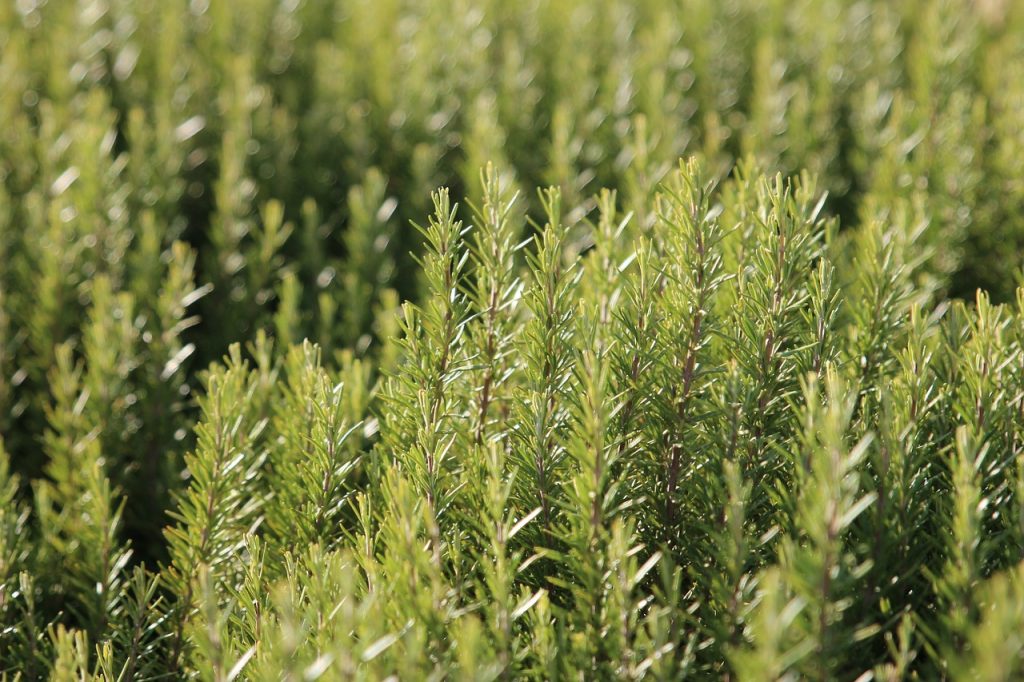
Rosemary (Rosemarinus officinalis) is an evergreen shrub that thrives in hot weather.
Rosemary’s ideal temperature range is between 70-85°F (21-29°C). You can still grow rosemary in colder conditions by growing it in a pot that can be moved indoors during winter.
Plant rosemary in full sun with 6-8 hours of direct sunlight daily to keep it happy and healthy. In very hot summers, some afternoon shade is beneficial.
Well-drained soil with good aeration is important for rosemary which prefers sandy or loamy soil with a pH of 6-7.
Once your rosemary plant is established it will be drought-tolerant. It still needs water! However, you should allow the soil to dry out between waterings so as not to cause root rot. In my climate, my rosemary does well with natural rainfall and the occasional additional watering in the height of summer.
Remember that rosemary can grow into a small shrub if left unchecked, so regular pruning is key to keeping it healthy and manageable. Pruning will also prevent your rosemary plant from becoming leggy.
To help keep it in great condition, rosemary can be pruned at the end of summer.
As a perennial, rosemary lasts 5-6 years before it becomes woody and needs replacing. But the great news is that if you are already growing rosemary, you can grow new rosemary plants easily from cuttings.
Rosemary makes a great hedge and will also grow happily in pots.
Using Rosemary In The Kitchen
Rosemary is the perfect complement to roast lamb, chicken, and pork. Rosemary also makes a delicious herb butter, and marinade, or is used for infused olive oil or vinegar. One of my favorite ways to use rosemary is in olive and rosemary bread!
During your regular rosemary pruning, dry out the rosemary springs by hanging them upside down someplace dry. Once dry you can remove the stems from the ‘leaves’ and you have made your very own dried rosemary. Store in a jar and sprinkle in your favorite dish.
2. Sage
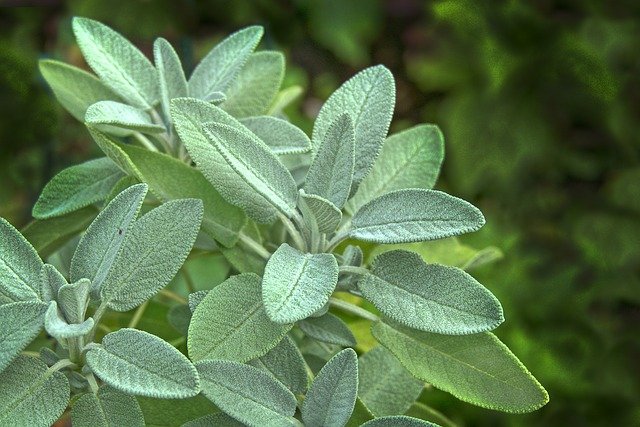
Sage (Salvia officinalis) is an attractive greyish-green leafed herb that does very well in a drought-hardy garden.
Like rosemary, sage can also be grown from cuttings and makes a pretty border or scattered throughout the vegetable garden. Growing sage in pots and containers is also an option if space is limited.
Sage may die back in the cold but does come back again in the spring, providing the conditions are right. However, sage will not survive harsh winters so if you live in this type of climate you can either plant the herb in pots and bring it inside from the cold or plant sage as an annual (lasting only one season).
Ideally, sage prefers temperatures between 60-70°F (15.5-21°C) and needs full sun (6-8 hours a day) to thrive.
Plant sage in well-drained soil with a soil pH of 6-7, that is amended with compost prior to planting.
One tip for a bushier sage plant is to tip prune it as it’s growing. You can use the sage in your dishes while also promoting a stronger and bushier plant. When it does come time to harvest your sage plant, be sure to only take up to one-third of the plant at a time. This will ensure the plant will continue to grow for another harvest.
Pruning sage should be done in spring to prevent sage from becoming leggy and woody.
Sage is drought-hardy once established so you can allow the soil to dry out somewhat between waterings.
Using Sage In The Kitchen
Sage is a wonderful accompaniment to chicken (hello stuffing!) and fish. Use sage leaves in stews, and sauces and turn them into a delicious sage butter. Sage goes well with all types of beans such as white beans and chic peas as well as veggies such as sweet potatoes and butternut squash.
Like rosemary, you can easily dry your sage leaves and collect them for later use. Dried sage leaves are best stored in a clean jar.
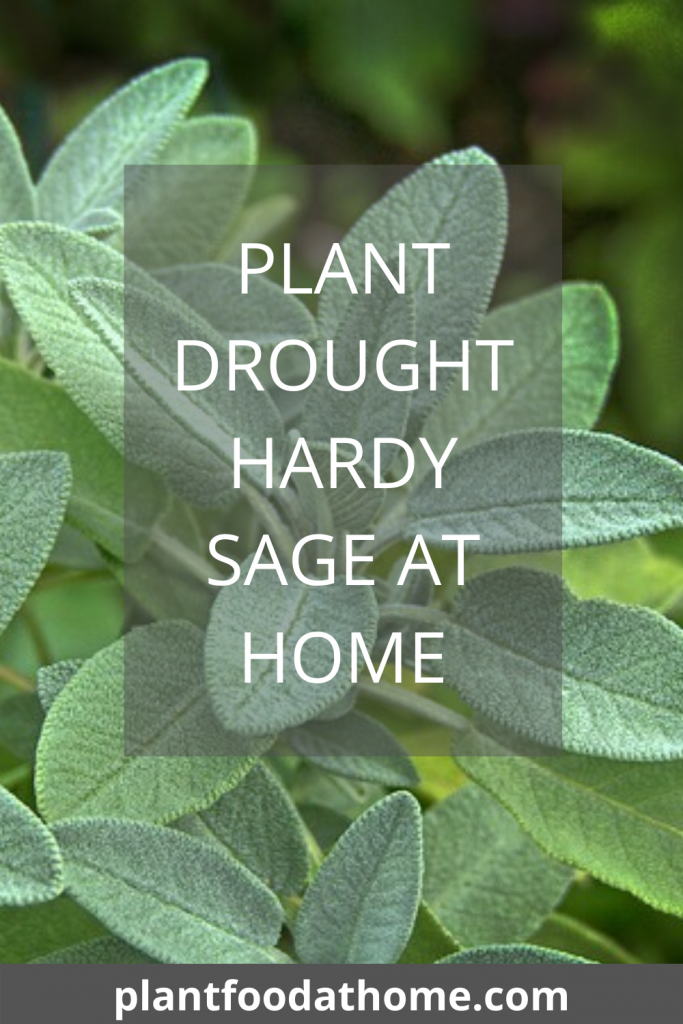
3. Oregano
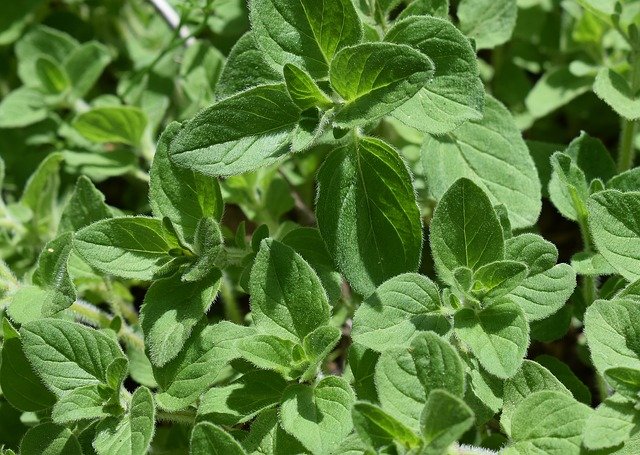
Growing oregano (Origanum vulgare) is so easy! When oregano is happy, it will grow and spread as a lovely herbaceous ground cover. Or oregano can be contained in pots if space is limited.
Oregano may benefit from cutting back to near ground level during cold climate winters with protection in the form of a light covering of mulch. During spring oregano will re-shoot.
Ideally, oregano thrives in temperatures between 60-80°F (21-26°C).
Like all of our drought-tolerant herbs, oregano prefers well-draining soil with a pH of 6-7.5.
Plant oregano in full sun and once it’s established you can allow the soil to dry out between waterings.
Using Oregano In The Kitchen
Oregano is amazing on pizza and in tomato-based sauces. Some people prefer oregano in its dried form in culinary dishes. A food dehydrator is perfect for drying large batches of oregano.
Oregano makes a yummy marinade, flavors stews, pairs well with pasta dishes, and is even made into pesto.
Herb butter is delicious with the addition of oregano and you can infuse olive oil and vinegar with this versatile herb.
4. Thyme
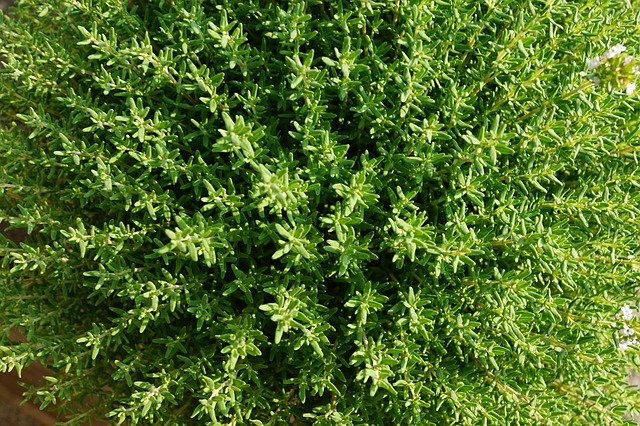
Growing thyme (Thymus vulgarisis) is low maintenance and very easy.
I have thyme growing in attractive borders around my garden and the plants spread to fill available gaps in the garden.
Thyme can be easily divided to create more plants by digging up an established thyme plant and separating part of the plant using a spade or cutting through the plant roots with secateurs. Both thyme plants are then replanted in the garden. The division of thyme is best done in spring or fall.
Generally, thyme grows best in temperatures 60-77°F (15.5-25°C) with soil pH of 6.5-8. Soil should be free-draining which will prevent it from waterlogging and causing rot root.
I’ve lost a few time plants to overwatering due to too much rain so be extra vigilant to ensure good soil drainage.
Thyme thrives in full sun (6-8 hours daily) and once established can be left to dry out a bit between waterings.
Using Thyme In The Kitchen
Thyme is an amazing all-rounder herb for savory dishes. From chicken, fish, pork, eggs and tomato sauce dishes, the list is endless. Versatile thyme provides enhanced flavor to sauces, stews, soups and more.
Make a thyme herb butter, infuse olive oil or vinegar, sprinkle thyme on roast veggies or create amazing-tasting stuffing!
Thyme also enhances savory baked goods such as breads, biscuits, and cornbread.
Water Requirements
These herbs do not require large amounts of water because they are drought-tolerant herbs. If you live in a climate with regular rain, that may be all these plants require. In times of drought or very dry climates, water may only be required weekly or when the soil is entirely dry.
You can check the soil 1-2 inches below the surface if it feels dry, it’s time for watering. Let the soil dry between watering and remember these herbs grow well in dry conditions.
You can use this water gauge to measure the moisture in the soil.
Conclusion
Even in dry conditions, you can still plant and enjoy food from your garden. Not only are they attractive in the garden, but these drought-resistant herbs are really easy herbs to grow. So why not be self-sufficient in one or all of these herbs in your garden at home?
Recommended Products
- Water Gauge – measure the soil moisture level.
- Liquid Fish Fertilizer – support newly planted herbs with a liquid fertilizer.
- Liquid Seaweed Fertilizer – support newly planted herbs with a liquid fertilizer.
- Food Dehydrator – drying your herbs is simple and easy with a dehydrator.
Further Reading:
- How To Grow Cilantro: Tips For Growing Cilantro
- 7 Tips To Successfully Grow Basil At Home
- How To Grow An Abundance Of Dill For Your Edible Garden
- How To Grow Mint: Complete Guide To Growing Mint At Home
- Growing Parsley: Planting, Harvesting and Storing Parsley
- How to Grow Lemongrass: Planting and Growing Guide
- How To Grow Ginger: Guide To Growing Ginger At Home
- Can You Eat Rosemary With Yellow Spots? (Answered!)
- Why Is My Lemongrass Plant Dying? Causes and Solutions
- Sage Plant Dying? Common Causes and Solutions!
- 8 Causes of a Dying Rosemary Plant (and How to Fix it)
